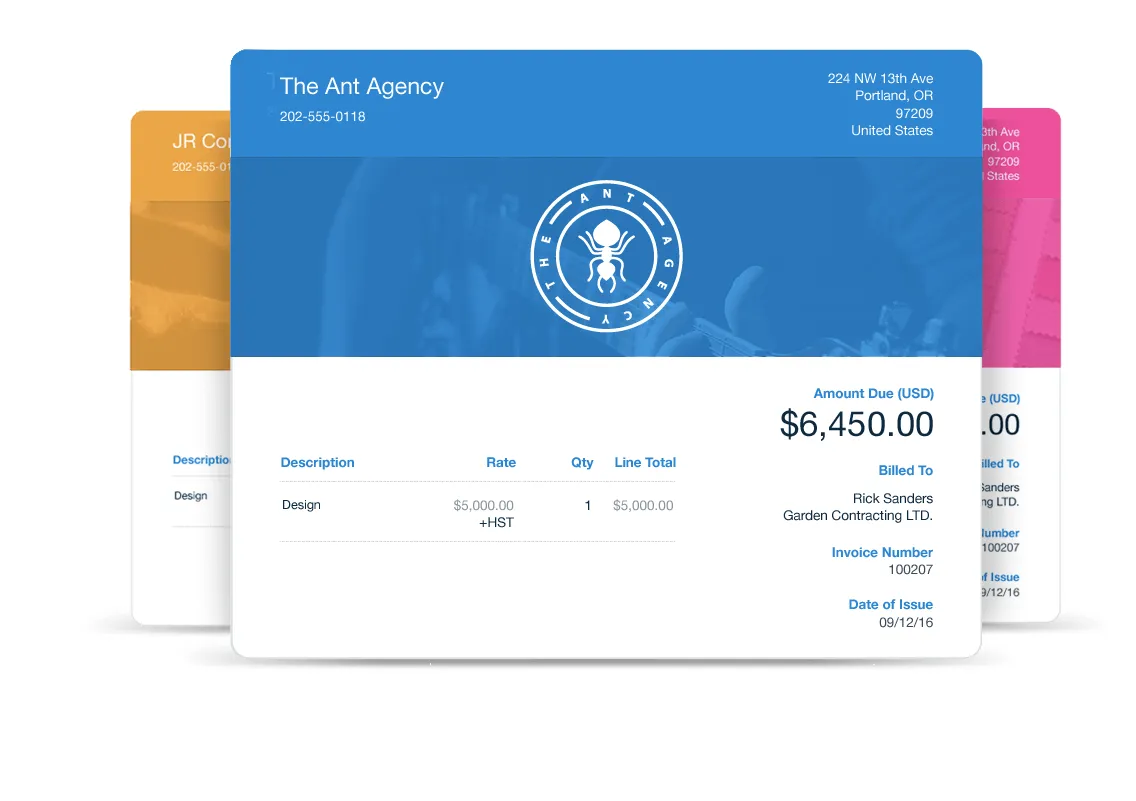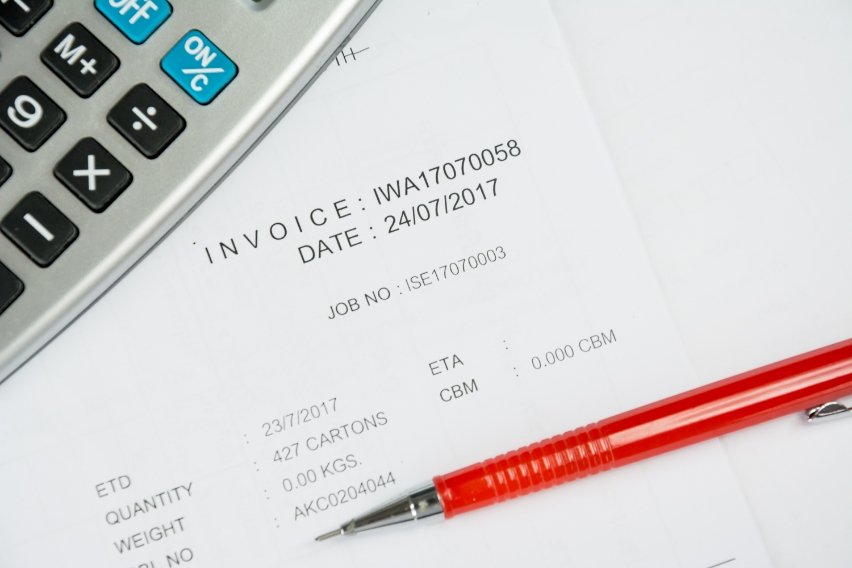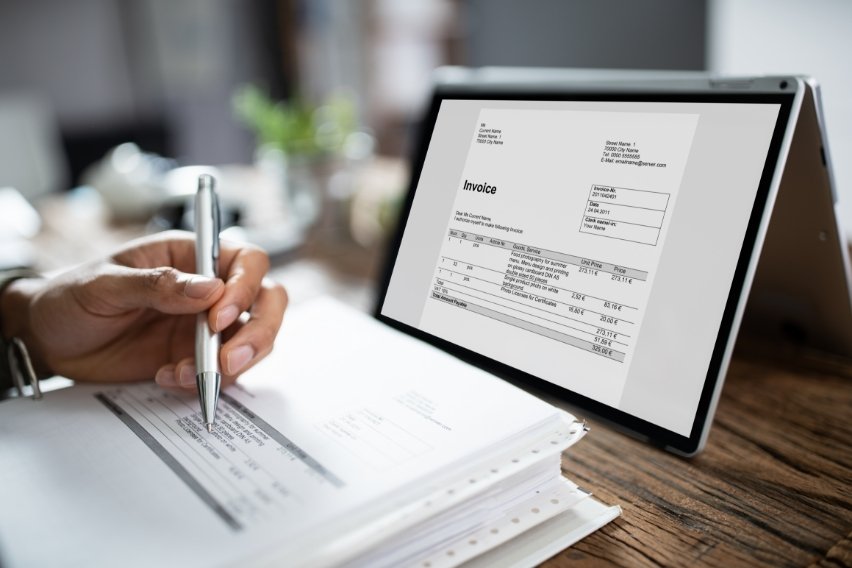What Is Progress Invoicing & How Does It Work?

It can be a challenge for a small business owner to stay on top of multiple partial payments. This can especially be the case for long-term projects with lots of overhead costs. So what are you meant to do when it comes to project payments for work completed?
This is where an effective progress billing process comes into play. Progress invoicing helps with a wide range of specifics, such as payment schedules to stay on top of the project’s cost. This way, everyone is on the same page and can work towards the successful completion of the project.
Keep reading to learn all you need to know about progress invoicing. You will be able to receive full payment even if there is a long timeline and handle can cost changes efficiently.
Table of Contents
- What Is Progress Invoicing?
- How Progress Invoicing Works
- Purpose of Progress Invoicing
- Progress Invoicing: Who Uses It?
- Benefits of Progress Invoicing for Business
- Steps of Progress Invoicing
- Progress Invoices: What Do They Include?
- Example of Progress Invoicing
- How to Manage Progress Invoicing With Invoicing Software
- Key Takeaways
- FAQs on Progress Invoicing
What Is Progress Invoicing?
With progress invoicing, consumers get incremental invoices during a project. It serves as an alternative to upfront billing or billing following the conclusion of a contract. Progress invoicing allows consumers to follow a pay-as-you-go setup. This works by dividing the total amount due on a contract into smaller amounts that are billed regularly.
It gives the giving company a method to get financial infusions during a project. As well, it benefits both the buyer and the seller in various ways. In some businesses, it’s the industry standard. For example, the American Institute of Architects (AIA) guidelines for billing in the building industry.
A method of billing clients that aims to expedite cash collection throughout a project is called progress invoicing. It’s a strategy for managing cash flow and is distinct from how revenue is recorded on a company’s books. Project milestones and completion rates, not the timing of invoices, determine revenue recognition.
As long as the customer and provider concur, progress billing can be tailored and specified in a project’s contract. The timing of each progress invoice is determined by the amount of progress that’s been made. Or by the delivery of a specific deliverable.

How Progress Invoicing Works
The entire cost of a project is specified in the contract or estimate. It’s then decided at the project’s outset by the customer and the company providing the service. Periodically, invoices are delivered to the client as the project progresses. The amount of each invoice is determined by either a schedule of value or an estimated percentage of the project’s completion.
The schedule of value is an AIA form that lists the work in a contract. It’s used to keep track of the cost overruns and the percentage of completion for each item. To make sure everything has been provided, it’s typical for a portion of the contract, like 5% or 10%, to be withheld until the end.
Progress billings are calculated based on the amount of the contract less the withheld amount. A few things that could potentially make progress billing more difficult include:
- Change orders
- Billing disputes
- Partial payments made by the customer
- Cost overruns
- Contractual penalties
Purpose of Progress Invoicing
Progress billing’s main goal is to collect money so the project can continue without having to wait for everything to get finished. It eases the provider’s cash-flow burden and reduces their need to finance a client’s long-term project. A business can better control overhead and liabilities by using progress invoicing to cover costs. These can include labor, subcontractors, and materials.
Progress Invoicing: Who Uses It?
If both the providing firm and the client agree, progress invoicing can be utilized in any industry for a project of any length. It’s used for high-value, lengthy projects and is common in the aerospace and construction sectors.
Other projects, like those for web design and development, often send progress bills as work gets finished over several months. Progress invoicing is frequently used in the industrial, engineering, and government defense sectors.
Benefits of Progress Invoicing for Business
Progress billing benefits both the client and the service provider. And when a company assists a consumer, other advantages frequently follow. While some benefits are quick and obvious, others are more indirect.
The following are some of the main advantages of progress billing:
- It can inspire collaborators and subcontractors who are compensated as the job is finished. The link between project progress and payment helps keep freelancers and web developers on schedule.
- Progress invoicing bills more often for lower sums, which might make it simpler to get payment from the client. Smaller payments may be easier for a company’s collection team to obtain from customers than a single lump-sum payment. The lesser quantities might also make it possible to give customers a larger selection of payment methods.
- It helps suppliers or contractors get finances internally to support operations. Examples include purchasing supplies for projects and paying subcontractors for work.
- Budgeting and forecasting can be facilitated by progress invoicing. It can help provide projections for future revenue, expense, and profit because it monitors the project.
- It necessitates communication with a client to help keep an understanding of the project’s state. Many stakeholders assess the percentage completion of each task when SOVs are implemented.
- Through transparent invoicing, progress billing increases client retention. For clients who want to know what they are paying for, progress invoicing might offer some amount of reassurance. When there is a certain level of comfort and transparency in the billing process, clients are happier.
- By minimizing upfront expenditures it offers a possible tactical edge for gaining new clients. Without a history of successful interactions, new clients could be unwilling to pay upfront for tasks. The alternative, payment after the project, restrict the project provider’s cash flow. Using progress billing lowers risk for both parties.
Steps of Progress Invoicing
A project’s progress invoicing involves, in broad terms, four steps. Each of these processes may have several components, be iterative, and call for multiple tasks. You can create estimates, automate invoicing, and keep track of payments with management software.
This can be the case when it’s integrated with other parts of your business. For example, customer relationships and project management using enterprise resource planning (ERP) tools.
The four phases of progress billing are as follows:
1. Signing the contract. There should be an agreement on progress invoicing and on billing frequency within the project agreement. It should outline the obligations of both the provider and the client. Billing conditions should be stated clearly. These can include approved payment options, payment deadlines, discounts, fines, and contracts.
2. Setting the schedule. The deadline for progress billing is based on the project schedule, therefore ascertain it. This will necessitate segmenting the project into smaller parts, both in terms of deliverables and cost. An SOV or schedules and estimates that support them can be used to do this.
3. Measuring progress. Measure the project’s progress toward completion using the SOV or previously specified milestones. Determine the right time for generating invoices based on the billing frequency and the completed work. One project might specify, for instance, that invoices should be produced at 5% intervals. Another project may have completion milestones that demand a progress invoice.
4. Issuing the invoices. Create the progress invoice, fill it up with the necessary details, submit it to the client, and start the collection process.
Progress Invoices: What Do They Include?
Always be clear and informative when sending invoices. Progress invoices have many of the same fundamental components as regular invoices. These include the invoice date, due date, accepted payment options, rewards for paying early, and late fees. You should always include the basic components of an invoice. Yet, there can be some additional details you might want to include.
These are:
- The original amount of the contract which could also include any relevant amendments if they’re applicable
- The total value of your progress billings based on the actual invoice date
- The total balance that has been paid to date
- The percentage of the project that has been completed so far
- The remaining balance of the total contract amount that hasn’t been paid yet
Example of Progress Invoicing
One of the easiest examples of progress invoicing can come from the construction industry. This is because there can be a higher opportunity for better cash flow benefits. Let’s say that Company X goes through negotiations and signs a contract with Company Y.
The deal is to build new apartments and there is an SOV included within the contract. This outlines the itemized deliverables over the contract length, which is two years. As well, the contract includes some additional details.
- The total contract price, which is $5 million
- The total project term, which is three years
- The billing frequency, which is quarterly
- The total retainage, which works out to be 10% when the project is complete
From here, the first invoice is sent minus any retainage, and Company X makes the payment right away. At the beginning of the second year, there is an unfortunate storm that delayed construction, reducing the amount of the next invoice. However, a good working relationship helps get the project back on schedule.
The project is completed and the invoicing schedule follows a scenario that’s based on deliverables. Even though there was a delay, the remaining balance of the project was paid off in full throughout the second and third years.

How to Manage Progress Invoicing With Invoicing Software
Unless you have billing systeme that can make progress invoicing simpler, billing issues can happen. These can make the progress seem like it’s harder than it’s worth. Some issues can include modification orders, unexpected cost increases, and disagreements over rates.
FreshBooks invoice software is an excellent choice for your small business to help with invoicing processes. You can benefit from a range of free invoice templates that will make your recurring schedule a whole lot easier.

Key Takeaways
Cash helps a business in a wide range of areas. It helps cover operating costs, maintain initiatives, and finance expansion potential. The use of progress invoicing can help a company maintain a steady cash flow while working on a lengthy project. You can even take multiple partial payments from the initial estimate if needed.
Many sectors use it, particularly those with high-value projects, yet it can be labor- and complexity-intensive. For example, web development often uses a progress invoice to take partial payments. Pros can continue to outweigh the drawbacks with the support of accounting software.
FreshBooks can help you reach more specific deliverable milestones for a wide range of projects. It allows you to stay on top of project tasks, align with the project timeline, and stay within the original contract. You can ensure you reach project completion and it’s a flexible billing software.
FAQs on Progress Invoicing
What benefits does progress invoicing provide to clients?
Customers do not have to pay for the entire project up front thanks to progress invoicing. You won’t be able to accept a deposit and leave without finishing the project. So your clients may feel secure knowing that work will proceed on the project.
What is the difference between Milestone and progress billing?
In a contract, milestone payments refer to deliverables that must be met before the client is required to make a payment. On the other hand, regular percentage payments of the total contract are the only option with progress payments.
What type of account is progress billings?
Progress billing is a sort of invoice that bills for work finished along the way and is typically used for large-scale building projects. Progress billing occurs incrementally as the project moves forward as opposed to billing at the end of the project.
What is work-in-progress billing?
The accounting term known as work in progress (WIP) refers to the value of work that has been performed but has not yet been invoiced. It helps with a consistent flow of completed work based on the overall cost. This is because projects typically are based on total project cost.
RELATED ARTICLES

 3-Way Matching: Definition & How It Works
3-Way Matching: Definition & How It Works Proforma Invoice vs Commercial Invoice: What’s The Difference?
Proforma Invoice vs Commercial Invoice: What’s The Difference? How to Write an Invoice: Step-by-Step Guide With Template
How to Write an Invoice: Step-by-Step Guide With Template Invoice Management: Definition & Benefits
Invoice Management: Definition & Benefits Sales Order vs Invoice: Meaning & Difference
Sales Order vs Invoice: Meaning & Difference Invoice Discounting: Definition and Benefits
Invoice Discounting: Definition and Benefits